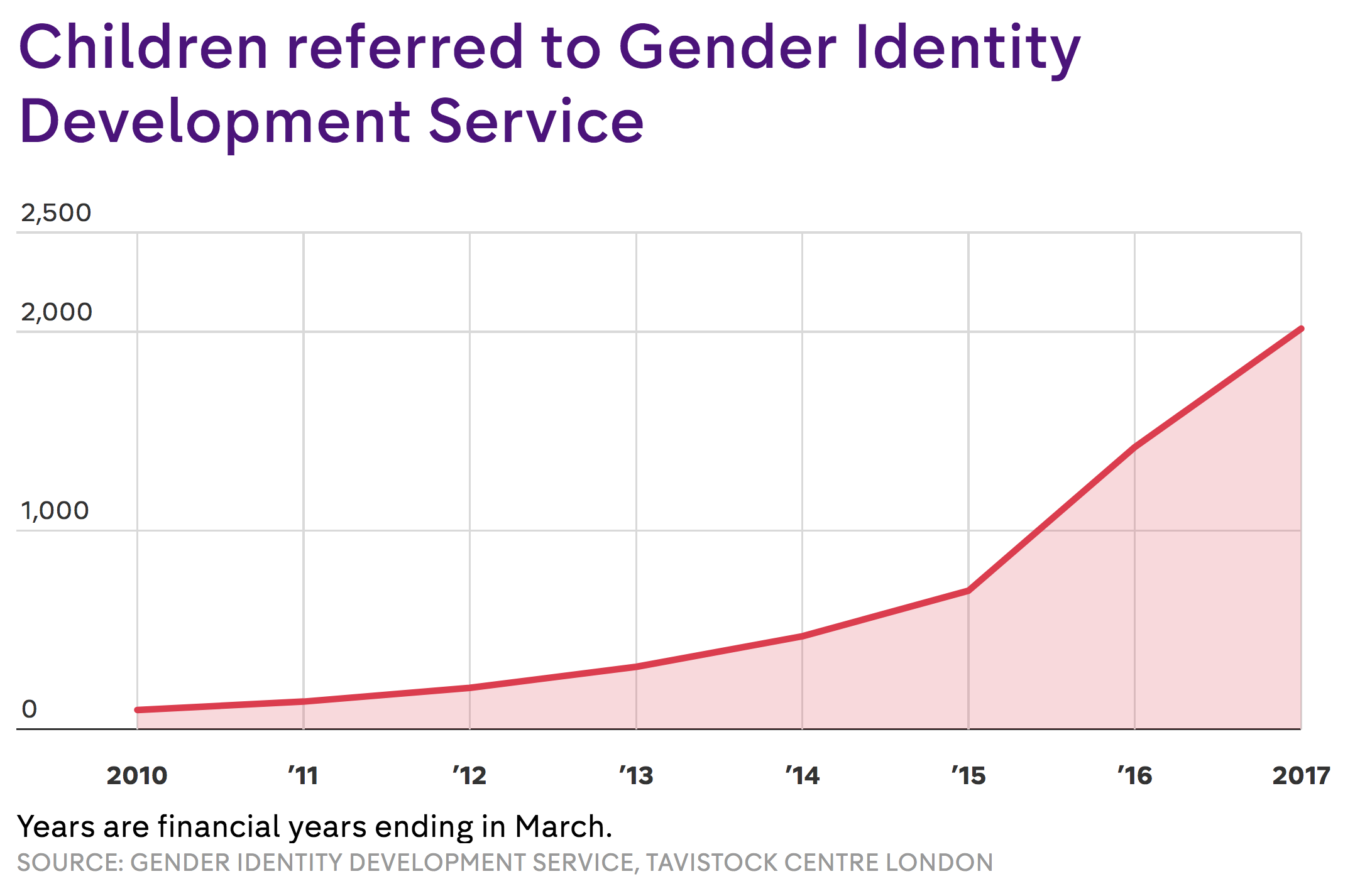Figures seen by the Mirror suggest that as many as 50 children a week are being referred to the UK’s leading gender identity clinic.
FactCheck looks at what we know about children and gender identity services in the UK.
How many children are being referred to gender identity clinics?
Official figures from the Gender Identity Development Service (GIDS) at the Tavistock Centre in London show that 2,016 children were referred to them in 2016-17.
That’s about 39 kids a week over the course of the year.
But the Mirror says it has seen data that shows 1,302 children have visited GIDS in the last six months – which works out at about 50 children a week.
We don’t know yet whether that high referral rate will continue for the rest of the year. If it does, it will mean that the number of children referred to GIDS each week has risen by 2,500 per cent since 2009-10.
The number of children attending GIDS has grown every year since 2009-10, but saw a marked increase in 2015-16 – when patient numbers doubled compared to the previous year.
It’s not clear what caused this.
The British Social Attitudes survey began to collect data on the public’s views towards transgender people for the first time in 2016. They cited the fact that “transgender people and their stories are becoming increasingly visible in society” as part of the reason to address attitudes to gender in the survey.
It’s possible that high-profile transgender people, including Caitlyn Jenner, Chelsea Manning and Laverne Cox have brought the issue of gender identity to a wider range of children and parents.
How many children go on to become transgender adults?
Children who are referred to gender identity clinics like the GIDS at the Tavistock Centre are often diagnosed with “gender dysphoria”.
The NHS describes the condition as one where “a person experiences discomfort or distress because there’s a mismatch between their biological sex and gender identity”.
A 2008 study in the Netherlands concluded that “The majority of children with gender dysphoria will not remain gender dysphoric after puberty”. Although it also found that kids who experience very strong feelings of dysphoria are more likely to still have them in adulthood.
A separate study from 2011 found that only 2 to 27 per cent of pre-pubescent children with gender dysphoria continued to have those feelings once puberty hit.
However, research cited by the Tavistock Centre also suggests that gender dysphoria is more likely to persist into adulthood when it’s reported by kids over the age of 12.
In other words, older children and those with more intense feelings of gender dysphoria in childhood are more likely to become transgender adults.
Younger children who report milder feelings of gender dysphoria are less likely to feel the same after puberty.
The majority of children referred to the gender identity clinic at the Tavistock Centre in 2016-17 were over 13 years old, with the most common ages being 15 and 16 years old. We don’t know how many of these were diagnosed with gender dysphoria.
What treatments can children receive at gender identity clinics?
Not all of the children who are referred to gender identity clinics will be diagnosed with gender dysphoria.
But children who do receive a diagnosis can be treated with synthetic hormones that “block” puberty. According to the NHS, the effects of this treatment “are considered to be fully reversible” and can stop at any time.
Figures revealed to the Mail on Sunday earlier this year suggested that as many as 800 children in England – including some as young as 10 – are being treated with puberty blockers.
Once a child reaches 17 they can be seen in an adult gender clinic, and can receive standard adult treatments for gender dysphoria if it has been clinically diagnosed. This can include stronger cross-sex hormones, which are not necessarily reversible and will eventually make those who take them completely infertile.
The minimum age for gender reassignment surgery is 18 years old.






